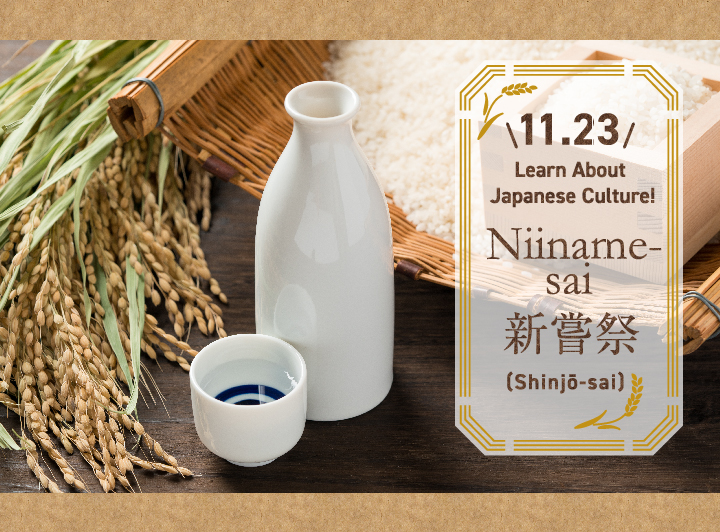Japan Sake and Shochu Makers Association | JSS

On November 23, the Emperor of Japan will perform one of the most important Shinto rituals in Japan, Niiname-sai. Niiname-sai, also celebrated non-religiously as Labor Thanksgiving Day, is a thanksgiving celebration in its own right. During the ritual, the Emperor shows gratitude to the gods for Japan’s harvest through offerings. One of the key offerings in this ceremony is Japan’s national drink, made from freshly harvested rice, sake. Here’s an overview of Niiname-sai and how sake plays a key role in its observation.
Niiname-sai 新嘗祭, also read as Niiname-no-Matsuri or Shinjo-sai, is a Shinto traditional celebration of the first rice harvest. The term itself often translates to “celebration of the first taste”, reflecting on the offerings given to the Shinto gods, or kami. Known as the “autumn festival”, the Emperor gives thanks to the kami at the Imperial Palace and both kami and the Emperor eat offerings together in the most important spiritual celebration of the year.
Sake and rice play a crucial role in Japan’s native Shinto religion. Shinto is a polytheistic, animistic belief system centered around nature and ancestor worship. Since its arrival over 2,000 years ago, rice has been an important crop to the Japanese people. Japan is also far north of the usual balmy climates suitable for rice cultivation. This difficult farming process only serves to make Japanese people more grateful for a successful harvest. Therefore, the practice of expressing gratitude to the gods for good fortune and good harvest has long been part of Japanese culture.
Originally, sake was the drink of the gods and served as a bridge between humans and the celestial. It also serves as a symbol of connecting with one another. For example, sharing sake represents the union of bride and groom in Shinto weddings. Today, Shinto shrines often display casks of sake representing offerings from locals.
Sake takes many forms in Shinto rituals. It accompanies salt in purification and groundbreaking rituals. It also serves as an offering of gratitude on its own. The sake used in ritual offerings is called mi-ki (sacred sake). Different sake brewing methods create special types of sake for offerings. The most common of these sake are shiro-ki and kuro-ki.
As outlined in the Engishiki, an ancient book of codes and rituals, shiro-ki, or white sake, must come from rice grown on shrine-affiliated fields. Kuro-ki, or black sake, is made through darkening shiroki with the ash of burnt plants. Shiroki and kuroki are the two types of sake used today in official Niiname-sai proceedings.
The rituals performed during Niiname-sai take place on both November 23 and 24th. To begin, the Imperial Household sets up two offering pedestals, one for the kami and one for the Emperor. The Emperor then makes the first round of offerings to the kami. Next, he partakes in tasting the offerings as well. These offerings include food and drink made from the fresh harvest. The key offerings consist of mi-ki (sake made from fermented rice), mi-ke
(steamed or boiled white rice), and mi-kagami (round rice cake made from pounded steamed rice).
This sharing of food and drink with the gods is called “naorai”. Today, the term naorai can refer to sharing drinks or rice cakes with friends. However, in a traditional context the practice remains sacred and codified. At its core, naorai references a return from the divine after entering the ritual space of the gods. After this return, the participating humans sip the same sake offered to the gods, emphasizing the shared bond through sake. In the case of the Niinamesai ritual, the Emperor ends the evening offering with naorai, taking four sips of each sake.
After concluding the evening meal, the Emperor then self-purifies in seclusion and changes ceremonial robes. At around 1 AM on November 24, the Emperor then begins the morning food offering to conclude the ritual.
Giving thanks to the gods for the harvest and continued prosperity continues on through Niiname-sai. Even as modern life grows more complex, honoring these traditions keeps the Japanese in touch with their history. By sharing sake with the gods, the Emperor connects the people to the divine. But, by sharing sake with each other, we can also connect and give thanks for the strong relationships in our lives.